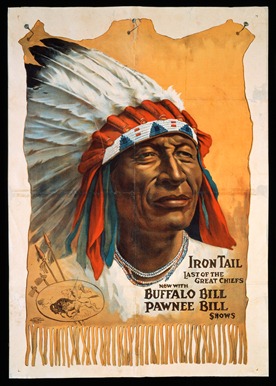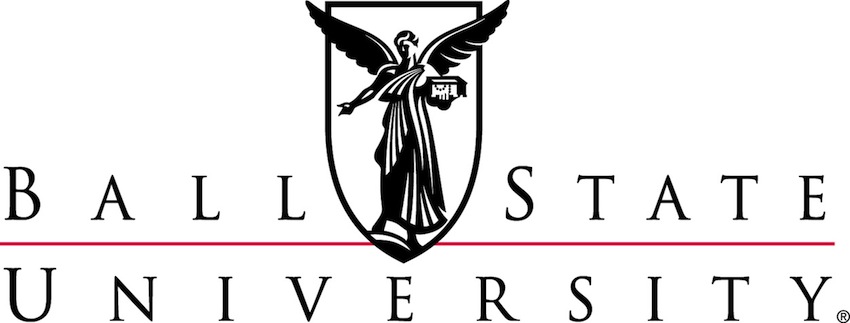Buffalo Bill's Wild West
William F. Cody forged his image in the West as a scout for the United States Army, a Pony Express Rider, an expert buffalo hunter, and an Indian fighter. Cody used the friendships he developed during his lifetime and knowledge of Native American culture from his army scouting days to build a mass entertainment phenomenon. By learning Plains Indian customs and warfare tactics he also gained a lifelong respect for Indian ways. Despite participating in deadly battles against tribes, Cody developed lasting friendships with Native Americans that would influence his own future.

Poster featuring Iron Tail, one of Käsebier's original sitters. Buffalo Bill Museum, Buffalo Bill Historical Center, Cody, Wyoming.
Begun as a Fourth of July celebration in North Platte, Nebraska in 1882, Cody's celebration turned into a 30 year successful business endeavor with Buffalo Bill's Wild West by 1883. Cody eventually employed American Indian performers and a "Congress of Rough Riders of the World," including a wide array of "exotic" cast members from around the nation and the world to thrill his audiences.
Surviving photographs, early films, programs, news clippings, advertisements, and posters of Buffalo Bill's Wild West show document how Cody and his performers presented both the real and a mythic American West to vast audiences across the United States and Europe between 1883 and 1913. Cody hired American Indians and an array of international cast members—American cowboys, Mexican vaqueros, Russian Cossacks, British military, and Arab performers—to recreate historic and infamous battles, race horses, display marksmanship skills, and generally intrigue visitors with live dramatic performances.
Cody worked with his longtime Wild West Company partner and vice-president, Nate Salsbury, and general manager Major John M. Burke to orchestrate the elaborate, complicated logistics for the traveling arena show. Each year the show highlighted Buffalo Bill's own life experiences, those of the American Indians, and demonstrations of expert marksmanship and horsemanship by men and women from throughout the world. Horse races, football, and native dances were popular segments repeated yearly in Buffalo Bill's Wild West, even being referred to as "the greatest show on earth" in a newspaper description. (1898 Buffalo Bill Cody Scrapbook, McCracken Research Library) Cody's show was serious competition for the circuses, minstrel shows, and theatrical traveling companies of the time. Cody, like P. T. Barnum, was a consummate entertainer exciting crowds yearly in American and, occasionally, European cities. Buffalo Bill's Wild West show played at World's Fairs in New Orleans, London, Paris, and Chicago, and was visited by United States presidents and generals and European royalty.
There is no evidence that Gertrude Käsebier ever met Cody during any of his visits to New York despite her strong connection to many of his Lakota performers.



